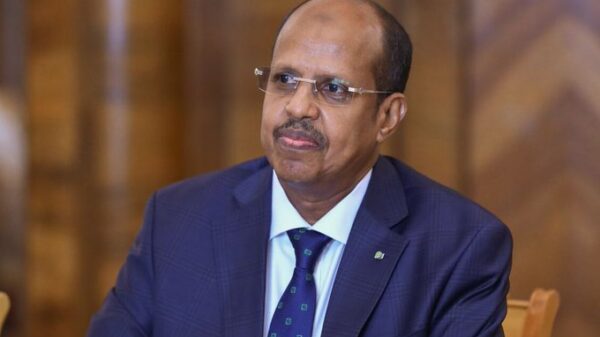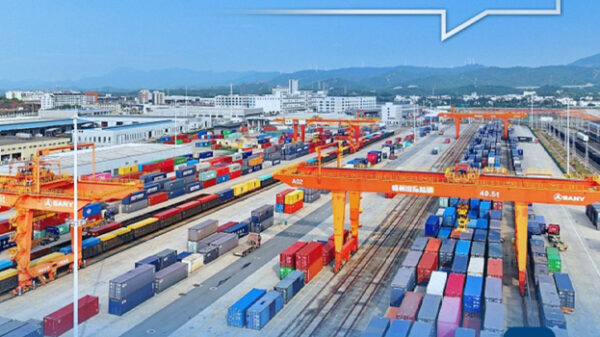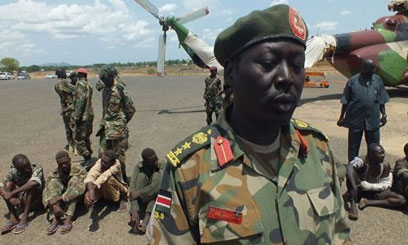South Sudan’s SPLA army repulsed fresh attacks launched by Sudan Armed Forces (SAF) troops Sunday near the village of Kuek, a widening of the fighting outside the contested Heglig oil field, the SPLA’s spokesman said.
“SAF is trying to open another front in Upper Nile state,” Colonel Philip Aguer told reporters.
“Today at 6:00 am local time (0300 GMT) they attacked a place call Kuek,” on the border with Sudan’s White Nile state,” he said. “SPLA had to counter-attack and repulsed them.”
Aguer said South Sudanese troops had not crossed the border, and that they continued to control Heglig.
The South Sudanese army said 19 of its soldiers had been killed in the clashes since last Tuesday. It said 240 soldiers from the Sudanase army had died.
There was no way of verifying the figures, the first toll issued in relation to the latest flare-up of violence along the border.
Later Sunday Sudan warned South Sudan against damaging oil facilities in the Heglig region it has occupied, after the South accused Khartoum’s air force of bombing the area.
“If the South Sudanese army affects the oil infrastructure it means it is keen on taking the conflict to a new level,” Foreign Ministry spokesman Al-Obeid Meruh said in a statement.
South Sudan’s army spokesman Colonel Aguer told reporters earlier that Sudanese planes were bombing the Heglig area “indiscriminately” but had not managed to oust his country’s forces.
Sudanese Information Minister Abdullah Ali Massar denied the claim.
The latest hostilities are the worst since South Sudan’s independence from Sudan last July under a 2005 peace accord, and have raised fears of a return to outright war.
The most intense fighting has centred on Heglig, a small town initially controlled by the Sudanese army that contributed about half of Sudan’s total oil production.
South Sudan, which also claims Heglig, seized the town Tuesday.
Egypt meanwhile said it wanted to play mediator in the deepening crisis.
Egyptian Foreign Minister Mohammed Kamel Amr met Sudan’s President Omar al-Bashir on Sunday and delivered a message from Egypt’s military ruler, Field Marshal Hussein Tantawi.
“I came here to listen to the Sudanese vision about the crisis and tomorrow I’m going to Juba to listen to South Sudan,” he told journalists.
“Then we can create a proposal for mediation to solve the crisis if the two parties agree to that,” he added, without disclosing the contents of Tantawi’s message.
The official SUNA news agency said Bashir welcomed Egypt’s role but had told Amr that Sudan refuses to negotiate with the South unless it withdraws from Heglig.
Egypt jointly ruled Sudan with Britain until independence in 1956.
South Sudan also brought the first batch of 14 Sudanese prisoners of war to Juba on Sunday.
The prisoners looked exhausted but appeared well-fed and in good spirits, with those wounded in battle having received medical treatment.
Several had fresh bandages over bullet wounds. Others were carried on stretchers.
“Things are OK,” said captured Sudanese medical officer Lieutenant Khalid Hassan Ahmed.
“I was brought to treat wounded people where there was fighting, but then we were captured last Tuesday during the attack.”
“I was forced to come to fight (for the Sudanese army), I have two bullets in my leg,” said Moror Malik, another prisoner.
Some two million people died in Sudan’s 1983-2005 civil war, one of Africa’s longest, before the peace deal that opened the way to South Sudan’s independence.
When the South separated, Khartoum lost about 75 percent of its oil production and billions of dollars in revenue, leaving the Heglig area as its main oil centre.












































